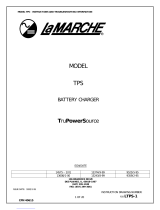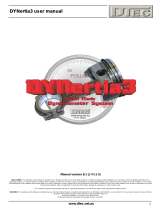Minster SCRB-68 is a solid state electronic control unit designed to provide controlled excitation for eddy current coupling type variable speed drives. It is compatible with Dynamatic, Louis-Allis Adjusto-Spede and Torspec drives and with WER drives that are equipped with special 90 volt D.C. coupling coils. The control may be used with drives requiring up to 900 watts at 90 volts D.C. It features extremely fast and accurate speed control, and a torque limiter feature prevents excitation of the eddy current coupling as long as motor current exceeds the preselected torque limit point.
Minster SCRB-68 is a solid state electronic control unit designed to provide controlled excitation for eddy current coupling type variable speed drives. It is compatible with Dynamatic, Louis-Allis Adjusto-Spede and Torspec drives and with WER drives that are equipped with special 90 volt D.C. coupling coils. The control may be used with drives requiring up to 900 watts at 90 volts D.C. It features extremely fast and accurate speed control, and a torque limiter feature prevents excitation of the eddy current coupling as long as motor current exceeds the preselected torque limit point.

















-
 1
1
-
 2
2
-
 3
3
-
 4
4
-
 5
5
-
 6
6
-
 7
7
-
 8
8
-
 9
9
-
 10
10
-
 11
11
-
 12
12
-
 13
13
-
 14
14
-
 15
15
-
 16
16
-
 17
17
-
 18
18
-
 19
19
-
 20
20
-
 21
21
-
 22
22
-
 23
23
-
 24
24
Minster SCRB-68 is a solid state electronic control unit designed to provide controlled excitation for eddy current coupling type variable speed drives. It is compatible with Dynamatic, Louis-Allis Adjusto-Spede and Torspec drives and with WER drives that are equipped with special 90 volt D.C. coupling coils. The control may be used with drives requiring up to 900 watts at 90 volts D.C. It features extremely fast and accurate speed control, and a torque limiter feature prevents excitation of the eddy current coupling as long as motor current exceeds the preselected torque limit point.
Ask a question and I''ll find the answer in the document
Finding information in a document is now easier with AI
Other documents
-
Pioneer DV-535 User manual
-
Campbell Scientific CPEC306/310 Closed-Path Eddy-Covariance Systems Owner's manual
-
 La Marche TPS User manual
La Marche TPS User manual
-
Trane SCWH User manual
-
The Home Depot 1054 User manual
-
Hubbell 100E User manual
-
 dtec DYNertia3 User manual
dtec DYNertia3 User manual
-
Ingersoll-Rand M150 Users Manual And Maintenance Manual
-
Ingersoll-Rand G110 Users Manual And Maintenance Manual
-
Trane Agility HDWA Installation, Operation and Maintenance Manual




























